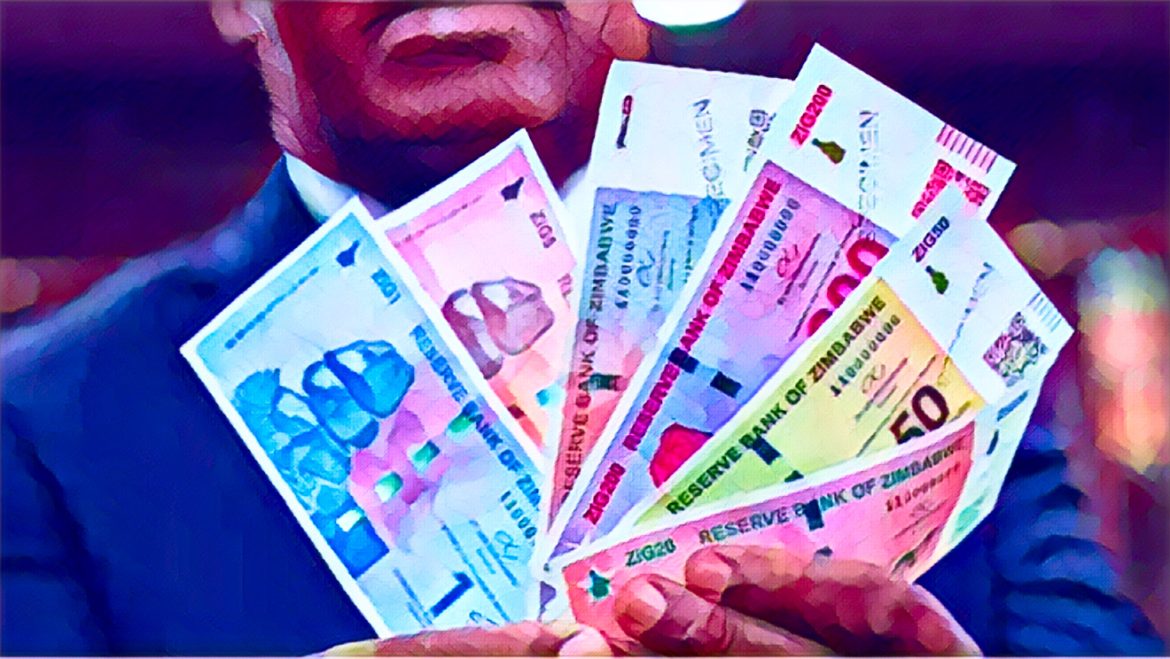KEY POINTS
- Zimbabwe’s currency crisis dates back to the early 2000s, with multiple collapses and devaluation cycles.
- The dominance of the US dollar continues to overshadow the adoption of Zimbabwe’s new gold-backed currency.
- Public scepticism of government-backed currencies remains high due to Zimbabwe’s history of hyperinflation and failed currency experiments.
The Zimbabwean government has released the Zimbabwe Gold (ZiG) currency backed by gold to stabilize an economy dealing with hyperinflation, currency devaluation, and dependence on the US dollar. Still, this new campaign has encountered serious scepticism. Understanding the challenges facing the gold-backed currency requires a look back at Zimbabwe’s long and chaotic currency crisis, which has generated a deep distrust in the financial system among the public.
A longstanding currency crisis is part of Zimbabwe’s history.
The economic struggles in Zimbabwe since the 2000s have created a currency crisis characterized by political flux, ineffective management, and a fall in agricultural production due to contested land reforms. A 2008 hyperinflation crisis ranked among the worst ever to hit the country, with monthly inflation climbing to 89.7 sextillion per cent. The abrupt devaluation of the Zimbabwean dollar turned it close to worthless by the time it finally concluded.
As a result, the national currency in Zimbabwe since 2009 has operated under a multi-currency system with the US dollar acting as the fundamental currency. Even with this supplying momentary stability, it triggered a wide variety of new issues. Zimbabwe’s adoption of foreign currencies primarily, the US dollar, has not brought it much command over its monetary policy.
Also, the country dealt with long-standing cash inadequacy, which resulted in the extensive use of mobile money services and the production of a black market for currency transactions.
The rollout of the Zimbabwe Gold (ZiG)
In an action intended to take charge of its currency and economy, Zimbabwe launched its currency again in 2019, called the Zimbabwean dollar (ZWL). Still, this currency quickly lost value because of inflation, which caused another period of currency devaluation. By 2023, Zimbabwe had launched Zimbabwe Gold (ZiG), a currency backed by gold created to enhance stability and lessen dependence on the U.S. dollar.
The concept behind the ZiG was to capitalize on Zimbabwe’s considerable gold deposits to back its money and encourage confidence in the local financial environment. The government intended that by linking the currency to a real asset, it could reign in inflation and encourage economic stability.
Still, public skepticism continues to be strong, because Zimbabweans have experienced the downturn of multiple currencies in the last two decades.
The effects of universal domination by the US dollar
One of the biggest hurdles to the achievement of the Zimbabwe Gold currency is the persisting hold of the US dollar in the economy of Zimbabwe. While the government pushes for de-dollarization, the U.S. dollar continues to be the most popular currency for both individuals and businesses.
Following Zimbabwe’s experiences with currency devaluation and hyperinflation, the trust in the US dollar comes solely from the loss of confidence by people in the government’s ability to run the economy smoothly.
Even though the period of dollarization in Zimbabwe (2009-2019) supplied some fast help, it strengthened the nation’s dependence on foreign currency. Over the years, shortages of US dollars came about because of the limited export base and insufficient foreign reserves, compelling many to look towards the black market. This condition has generated a vicious cycle in which dependence on the US dollar continues to devalue the local currency.
Despite governmental efforts to push the gold-backed currency, the US dollar’s tight grip stays unchallenged. People and enterprises tend to use the US dollar because it is stable, widely usable and defends them from risks of inflation.
As a result of this preference, the implementation of the ZiG in common transactions has been seriously restrained, with a lot of people regarding the gold-backed currency as just another experiment that might not pan out, much like those that preceded it.
Currency devaluation over the years
Zimbabwe’s struggle with currency issues has its source in the history of quick devaluation. Since the time of the collapse of the original Zimbabwean dollar in 2008, maintaining a stable currency has been a struggle for the country.
In the time following its abandonment of currency, Zimbabwe integrated several local currencies, including bond notes and bringing back the Zimbabwean dollar in 2019. Despite that, these strategies were at risk of hyperinflation, which produced a greater devaluation of the local currency.
Belief in new government plans for currency reform among Zimbabweans is low as a result of the ongoing cycles of currency collapse, reintroduction, and devaluation. The ambiguous estimates of Zimbabwe’s gold reserves, together with the belief that a gold-backed currency is just a provisional fix, weaken public confidence in its future capabilities.
Successful implementation of the gold-backed currency (ZiG) in Zimbabwe requires the government to behave with both transparency and discipline, to earn back public faith. Recognition of this issue signals a demand for full transparency about the nation’s gold reserves, backed by firm fiscal policies which aim to limit inflation and stop devaluation.
In addition, lowering dependence on the US dollar is important for the economy to finally accomplish monetary stability by supporting local industries and increasing exports. Beginning public initiatives aimed at teaching the community the benefits of the ZiG is essential, along with its commitment to providing long-term financial reliability. Joining these efforts could bolster belief in Zimbabwe’s emerging financial future and make sure the ZiG succeeds.


